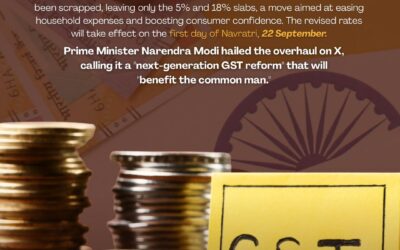How Quick Commerce & E-Commerce Are Transforming India — And What It Means for Offline Businesses
India’s business landscape isn’t just shifting—it’s being rewritten. Over the past five years, e-commerce and quick commerce (q-commerce) have crashed through traditional barriers, reshaping what it means to buy and sell in the world’s most populous country. But what’s really happening? And how are these seismic changes hitting the country’s offline industries, from bustling bazaars to your neighborhood kirana store?
The Dawn of Quick Commerce: More Than Just Speed
Cast your mind back to 2015: ordering groceries online often meant waiting 24–48 hours (if not longer) for delivery. Fast-forward to today, and urban Indian consumers can get everything from atta to air pods delivered in under 20 minutes. This isn’t science fiction—it’s quick commerce.
Platforms like Zepto, Blinkit, and Instamart have become household names, capitalizing on a new promise: “instant everything.” The numbers are staggering. Quick commerce in India saw its market nearly double in GMV between 2022 and 2024, with projections crossing US$5 billion by 2025.
But it’s not just the jaw-dropping speed. Q-commerce is steadily extending its reach beyond groceries into electronics, personal care, and even fashion. Convenience—combined with AI-powered recommendations and discounts—is driving Indians to rethink how, when, and what they buy.
The Ripple Effect: E-Commerce Isn’t Slowing Down
While q-commerce grabs headlines, “traditional” e-commerce is also thriving. Online marketplaces have matured, last-mile logistics have become seamless, and digital payments (thanks to UPI) are approaching ubiquity. Whether you’re in Mumbai or Moradabad, a smartphone and an internet connection can now connect you to millions of products and services in seconds.
The upshot? Indian shoppers have grown more demanding, better informed, and less brand-loyal. They expect choices on their fingertips, transparency on pricing, and—above all—convenience.
What Does This Mean for Offline Retail?
Here’s where the story gets complicated. The rise of e-commerce and q-commerce isn’t just about delivery speed and digital convenience. It’s also putting immense pressure on the country’s vibrant, centuries-old offline retail sector.
The Challenges: An Existential Threat?
- Squeezed by Price Wars: Q-commerce’s deep discounts and wide product range are temptations hard to resist—even for the most loyal local customers. Small retailers, operating on thin margins, are struggling to compete.
- Loss of Footfall and Familiarity: As more consumers turn to their screens, iconic neighborhood markets and mom-and-pop shops are seeing less foot traffic. The risk is real: a future where the local economy becomes increasingly dominated by a handful of tech giants.
- Data Disadvantage: Q-commerce platforms analyze every order, every search, and every click. This data goldmine gives online players an edge in targeting, promotions, and product placement—something many offline businesses still lack.
The Flip Side: Opportunity Knocks
But it’s not all gloom and doom. Many offline retailers are fighting back—and smartly.
- Going Omnichannel: Increasingly, local stores are listing their inventory on e-commerce platforms and even offering super-fast hyperlocal deliveries, leveraging the reach and logistics of q-commerce giants while retaining their neighborhood trust.
- Experience Matters: Physical stores are reinventing themselves as experiential spaces—think tasting sessions, product demos, or community events—that digital simply cannot replicate.
- Government Backing: Initiatives like ONDC (Open Network for Digital Commerce) are working to ensure smaller retailers get digital visibility and a more even playing field, while programs like Digital India and Start-up India are laying the infrastructure for future growth.
In Conclusion: Adapt, Innovate, Thrive
India’s retail future won’t be a story of online versus offline. The lines are blurring, and the winners will be those who can blend digital convenience with local trust and personal touch. Whether you’re a big city consumer, a small-town retailer, or a family-run shop watching the world change, adaptation is now the name of the game.
The question isn’t whether e-commerce and q-commerce will transform business in India—they already are. The question is: How will YOU respond?




